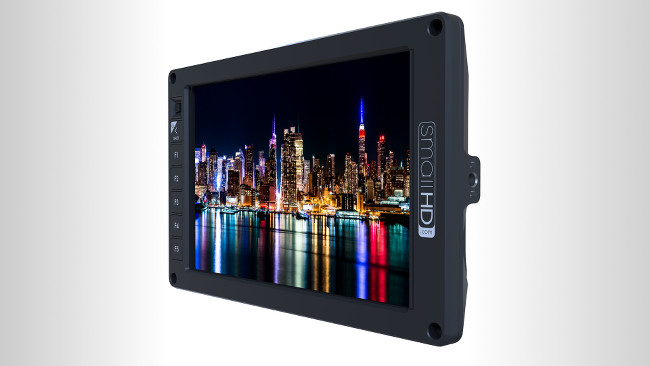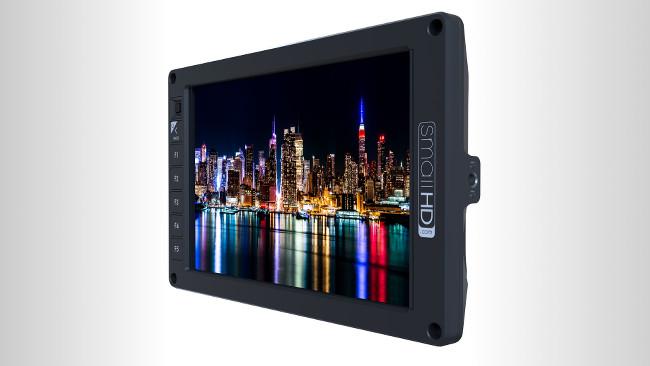
SmallHD's latest offering is a high contrast, OLED variant of its 702 7-inch monitor line and marks the company's first foray into all things OLED.
Despite having existed for less than ten years, monitor manufacturer SmallHD has achieved a breakneck release schedule and offers an impressive range of products. These now include everything from the truly small to the rather less small, as well as displays with desirable OLED technology. Today, the company has announced a variation on its popular 702 series which is to use an OLED display.
OLED to the rescue
Display technology is in a state of flux. For decades, all we had was the cathode ray tube and, in many ways, that was okay because there are ways in which they work rather well. Still, despite fond memories of CRTs, they're only arguably better than modern TFT-LCD displays. They don't achieve perfect blacks, they can have problems with consistent brightness, as a larger area of the display is illuminated, and the geometry is only as good as we'd expect from a wobbly electron beam being towed around by magnets. Equally, TFTs are, at best, a stop-gap technology. Geometry is great and we can choose a variety of different dyes to improve the display's ability to show a wide range of colours. Unfortunately, when a TFT display is notionally off, some of that backlight energy still leaks through, so even the best of them struggle to achieve full black. They're also tremendously inefficient, since the backlight must pass through a polarising filter, which robs around 50% of its power and dissipates that energy as heat.
Fairly clearly, we're heading towards OLED as a solution. It's not ideal; we must make a choice between high brightness and long life, but it has more-or-less all the capability of TFT-LCD, less brightness, with the huge advantage that when a pixel is told to be black, it is fundamentally switched off and should emit absolutely no light. It should also consume absolutely no power, though practical implementations will naturally need a sniff of energy to run their processing electronics regardless of picture content.
Most people will have seen an OLED by now, even if just in a consumer electronics store, and the inky blacks are very persuasive. The problem is that brightness issue. The substances used to create OLED panels can begin to break down if driven too hard and early models were notorious for going yellow as the blue-emitting elements aged prematurely. Those problems are, to some extent, solved, with consumer OLEDs sometimes using white-emitting pixels as a way to increase apparent brightness, but that can cause problems with calibration for precision work and wouldn't generally be used for a professional monitor.
A professional solution?
All this notwithstanding, the excellent contrast performance of OLED makes it very suitable for professional displays in film and television. This is especially true of high dynamic range work. Since an OLED can (theoretically) achieve an absolute zero black level, its dynamic range is (theoretically) infinite, although practically, peak brightness can be low enough to make HDR displays realistic only with better OLEDs. Consumer standards define two ranges of capability as acceptable for HDR, one of which is clearly aimed at OLEDs, having a very low black level requirement and only a moderately high peak white brightness (the other range is aimed at TFT-LCD displays, with a much higher peak white but much greyer blacks.)
Currently-available information about SmallHD's new display tells us that it'll hit 300 nits of brightness, which is considerably less than the otherwise-equivalent 702 series (even overlooking the 702 Bright, which at 1000 nits is designed for daylight viewability and is something of a special case). As with many seven-inch OLEDs, the display is of sub-HD resolution, at 1280 by 800 pixels, although, at seven inches, this isn't really a problem – it works out to nearly 200dpi of real-world resolution. Any larger and it would need to be full HD, but it's fine at this size. Wide colour gamut is mentioned, although specific colour standards are not. Otherwise, the new device is to be equivalent in functionality to the 702, which could be seen as a rather more heavily-built version of the extremely popular AC7 series. We liked SmallHD's page-based user interface very much when we recently looked at the company's larger 1303 and it has been well-regarded for displays in the seven-inch range for some time. The ability to snap frames to an SD card is welcome, as is discussion of latency, which is a bugbear of too many devices at the moment; the new monitor should achieve less than a frame.
At $1599, the new monitor seems likely to be an affordable way into high-contrast monitoring.
Tags: Production



Comments